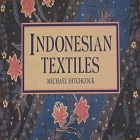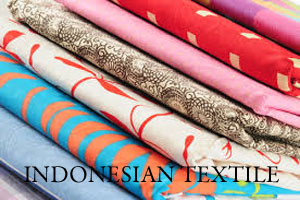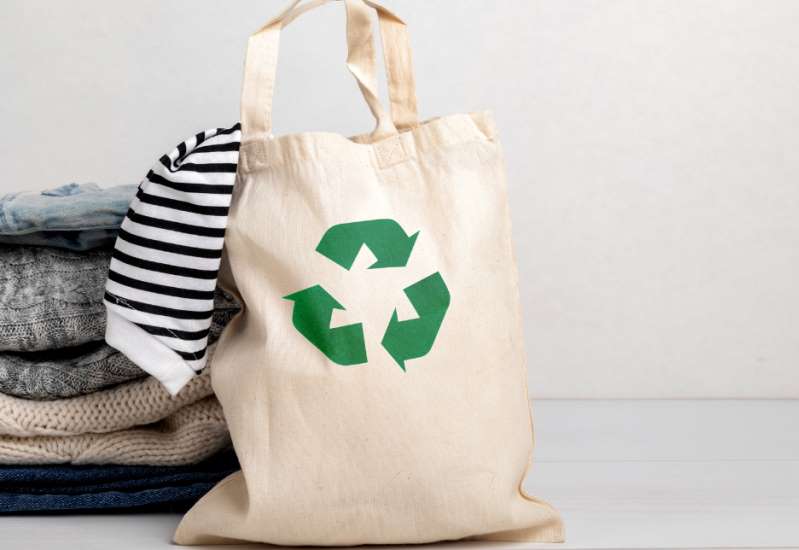FW

Indonesia's garment and textiles industry has seen good sales growth as consumers loosen their purse strings. Moreover, the country is doing well, partly due to weaker rupiah. However, the sector is facing major challenges amidst rising competition in the ASEAN region. Indonesia needs to strengthen capital, technology and know-how, to help meet quality and quantity of goods in the growing apparel industry. This is a challenge to attain and also an opportunity for investors.

Upstream investment in Indonesia’s textile industry is because of the healthy downstream business as garment manufacturers capitalise on rising domestic and foreign demand. Indonesian government is set to increase the value of exported textiles and garments to $75 billion by 2030, contributing 5 per cent to global exports.
Upstream business hurdles
Indonesia leads in textile manufacturing due to strong upstream and downstream business. Major local garment makers want to take advantage of this and have also upped their capital to acquire assets, which would help them streamline their supply chains. The upstream side though, has been struggling to keep up. As per Indonesian Synthetic Fiber Producers Association (APSyFI), imports of fibre doubled to around 600,000 tonnes from 300,000 in 2008. As downstream businesses keep sourcing their input materials from abroad, the domestic upstream industry has been failing to benefit from rising consumer expenditure.
The output of upstream textile products has grown through the years, but costs have gone up faster, thus straining businesses. The imperfect condition of upstream business also reflects in the industrial production index for the textile industry. This has been declining since 2010, which is in contrast to most other industries. Large and medium-sized textile businesses have declined in numbers. Trade data shows that the country’s upstream business is increasingly becoming dependent on imports, while exports grew only moderately over the past five years.
Imports of both yarn and fabrics have increased and in manmade fibre products, imports of yarn and woven fabric have outpaced exports over the past five years. Also, the imports of manmade filaments and staple fibres have grown rapidly, as the garment industry demand increased. Thus, Indonesia's upstream textile industry is struggling to ward off foreign competition.
Factors affecting upstream business
Lack of competitiveness in Indonesia’s textile industry can be put down to several factors. The use of inefficient technology, underdeveloped transportation system, power infrastructure and rising energy costs are some of them. Labour, of course, is the garment producers’ biggest worry, but not as much for the capital intensive upstream business. Indonesia also falls behind in higher-value products where local producers are concerned.
Government incentives to help textile companies have been insufficient so far and even government-sponsored training programmes and industry clusters aimed at generating local know-how and fostering integration are not that successful. Besides, the upstream business lacks competitiveness. So, since government measure so hardly effect, hopes are pinned on the private sector and foreign investors. Exporters of spinning and weaving machinery, consulting and staff-training too have an opportunity here.
The International Cotton Association (ICA) and the Beijing Cotton Outlook Consulting, are jointly organising a three-day interactive training course to focus on the key areas of China’s international cotton trade and global cotton market. The programme is scheduled for September 21, 2015. There will be a series of training modules, conducted in Chinese by industry expert. The modulus would cover topics such as: Fundamental knowledge (world cotton market and import/export, major cotton export countries and their characteristics); major cotton export countries and their characteristics); trading rules (dispute resolution, international trading rules, arbitration agreements, arbitration procedures and arbitrator training); and trading issues (risk management, contract making, futures and options, cotton controlling and testing).
The program also includes a series of elements, presented by top experts. These include: Basics (world cotton market, import and export, the main cotton exporters and their characteristics); trade rules (to resolve disputes, international trade rules, the arbitration agreement, the arbitration proceedings and the arbitrators training); and trade issues (risk control, contract making, hedging, cotton inspection and testing).
This trade training programme is especially developed for the Chinese cotton industry, is conducted in Chinese and meant for all age groups from all sectors of the cotton industry. The three day program slated for September 21 to24 will be held at the Shenzhen Silver Lake Resort Hotel in Shenzhen, China.
The issue of compliance to safety rules in RMGs has taken centre stage in Bangladesh. This was visible in a recent meeting organised by the Centre for Policy Dialogue, involving union representatives, industry stakeholders and business leaders to brainstorm on compliance matters and how to maintain basic standards of safety in RMGs. The stakeholders are now keen to install safety equipments in their premises irrespective of cost and investment it may incur for them.
Experts feel safety issues may have taken precedence over others in Bangladesh, however, the matter is so crucial that it should not be ignored by other countries as well. This can help them to grow in manufacturing since the investment costs in countries other than Bangladesh is low, owing to factors such as developed infrastructure, lower interest rates, financial incentives and low cost of materials. The redressal of safety issues will give a competitive edge to companies involved in this segment and will assist everyone in the industry one way or another.
They also felt the whole exercise should not be a one sided affair and reforms should be the responsibility of both, the government and the industry.
Euromonitor International predicts the global market for Islamic fashion clothing is set to almost double its annual growth in the future. Natalia Gorzawski, Euromonitor International’s research analyst says that in the short-term it may be more beneficial for a manufacturer to invest in existing local brands or together with a Muslim fashion designer to create a new label.
Intensive research in the local markets and financial resources to develop a manufacturing process and a supply chain that can guarantee compliance with widely accepted halal standards is what a new brands needs to do, she said. Besides, Gorzawski explained that manufacturers would need to create an affordable clothing line that could meet the demand of the mass market and not just a small minority of upscale consumers if they want to exploit the full potential of this underserved consumer segment. She believes that these are the reasons why multinational companies still struggle to enter the market.
Gorzawski also feels that Islamic fashion has tremendous long-term potential. In 2013, the 57 countries that belong to the Organisation of Islamic Cooperation (OIC) accounted for 7 per cent of total value sales of apparel and footwear. Euromonitor International forecasts this figure to increase over 9 per cent by 2018.
According to Euromonitor’s estimates 7.9 per cent of the fashion market accounted for OIC countries in 2014, and this year their share will go up to 8.1 per cent. In 2016, it would go up to 8.4 per cent, in 2017 it would be 8.8 per cent, and in 2018 it would be 9.1 per cent.
Researchers in Australia have found a way to separate blends of cotton and polyester. This has been hailed as a major breakthrough for recycling textile and other waste.
A significant hurdle to recycling waste clothing and other textiles into their original fibers was that most of this material is composed of blended fibers - the most common being polyester and cotton blends. While it is easy to recycle cotton and polyester individually, it is not possible to mechanically separate the blends where the fibers are closely bonded together.
However the researchers have developed a simple process to separate polyester and cotton blends into their individual components using an ionic liquid or a salt in a liquid state.
Unlike harsh solvents which have previously been used to dissolve polyester, ionic liquids provide an environmentally friendly solvent to chemically separate polyester and cotton blends. Another benefit of using ionic liquids is the ease with which the polyester and cotton can be separated.
The ionic liquid selectively dissolves the cotton component, with the added advantage that the liquid can then be recycled and reused. This cotton can then be regenerated into various forms, such as spun into fibers or cast as cellulose films, like cellophane.
The cotton, textiles and garment manufacturing, once flourished in Nigeria and this industry was bulwark of manufacturing in the country and provided jobs for as many as a million Nigerians.
There were well over 150 vibrant mills operating at close to full capacity and the sector was second only to government as an employer of labor. Now less than 20 textile companies are operational.
However it is now almost completely dominated by imports from Asia. Textile products are imported from India, while imports from China, Indonesia and Taiwan are much higher.Nigerians have become used to imported goods to the detriment of locally-manufactured ones.
The Nigerian government now has called on its people to buy products made in Nigeria than relying on imports. The argument is that Nigeria has the raw material, the cotton and the labor to rebuild a profitable garment industry.
The output of the textiles, apparel and footwear segment in the first quarter of 2015 represented around 2.2 per cent of constant price GDP and 21.7 per cent of manufacturing.
There are various challenges facing the industry, including smuggling and the problem of power shortage. About 35 per cent of manufacturing costs are energy related.

Bangladesh saw remarkable growth in export of ready-made garments (RMG) to the United States between 2005-11. However, since then growth has slowed down for both knits and woven garments. Between 2011 and 2014, total apparel export rose by 7.3 per cent, which was a little more than the increase in the US apparel import demand. This means that Bangladesh had a marginal rise of 0.1 per cent in its share of the US market. A decrease in exports of Bangladesh’s single largest export destination shows that there is a downtrend in garment exports.
AGOA may cause disruptions

Now Bangladesh has tough competition from Africa which is fast emerging as a sourcing destination for Europe and the US. The African Growth and Opportunity Act (AGOA) was passed by the US over a decade ago, where it offers tangible incentives to African countries. This is to continue their efforts to open up their economies and build free markets. Due to this, it is highly possible that Bangladesh may lose its competitiveness in the export of garments to the US.
Bangladesh currently pays 15.62 per cent duty for its garment exports to the US, whereas Vietnam pays 8.38 per cent. If the TPP (Trans-Pacific Partnership) comes through, Vietnam’s garment items will enjoy duty-free access to the US. Since US tariffs treat Bangladesh like a developing country and not like a LDC (least developed countries), it has to pay more tariffs than France does for one-15th of the exports. The high tariff rates levied on Bangladeshi apparels hinders RMG industry’s capacity to partake in a bigger share of the US market.
Vietnam’s apparel exports too could rise faster than the current rate, eventually capturing a larger share of the US market. Vietnam has done well through 2005 to 2014 compared to Bangladesh. Also, there’s a gradual dip in the price of Bangladesh garments in the US.
Competition on the rise
In the last couple of years, the prices of apparel items dipped significantly in the international market. This is because global buyers controlled the market and pressurised suppliers to lower prices. The reduction of price is through 'monopsony', (monopsony is a market condition similar to monopoly, where a large buyer, not seller, controls a major portion of the market, and drives prices down). It is sometimes referred to as buyer's monopoly this helps big buyers to put pressure to reduce the prices of products because the number of suppliers is much higher than that of buyers.
Garment products from China and Vietnam too have risen and Vietnam has already entered into a partnership agreement with some other countries including the US. The US-led trade pact, Trans-Pacific Partnership (TPP) involves 12 countries: Australia, Brunei, Canada, Chile, Japan, Malaysia, Mexico, New Zealand, Peru, Singapore, the US and Vietnam. This accounts for 40 per cent of the world GDP (gross domestic product) and Vietnam is the only garment-producing country that is included in the TPP.
Bangladesh though, has signed Trade and Investment Framework Agreement (TIFA),a bilateral agreement between the US and another country. TIFA 2005 stressed the need to ‘encourage and facilitate the exchange of goods and services and to secure favourable conditions for long-term development and diversification of trade between the two countries’. Next, there could be negotiation of a bilateral free trade agreement between Bangladesh and the US.
Bangladesh could take an interim measure, improve compliance, take an initiative to take protection of the Competition Act and coordination and close relations with the US lawmakers and the Washington administration, to get favourable terms of trade. It can even ask for protection from monopsony from small US buyers. This can lead to control over price and market by retailers. Moreover, it can follow the Chinese strategy of enhancing productivity and manufacturing high value-added products to increase its market share in the US.
A Tencel fibre indigo chambray collection 'Tencel 24: Day into Night' will be launched by Lenzing, a worldwide leader in the production of cellulose fibres. The breadth and beauty of ‘the’ most recognisable type of fabrics made out of Tencel is what the new ladies collection will comprise of. Lenzing’s commitment to fibre innovation and environmental responsibility is the result of this new line. As Tricia Carey, Director of Business says introducing sustainable new ideas for the denim market required collaboration across the entire supply chain including garment processing. Thus, the Tencel24: Day into Night range is a conscious effort to express that there is not need to sacrifice aesthetic excellence while adopting the new environmentally responsible laundry techniques, she added.
Lenzing has collaborated with Jeanologia, a global leader in sustainable garment finishing technologies, to create the collection’s fresh take on classic product. These cutting-edge finishing techniques were the result of Chambray indigo fabrics made with TENCEL fibre. Use of the fabrics also gave aesthetics, which previously would not have been possible to achieve.
Enrique Silla, Jeanologia co-founder points out the true beauty of the special chambray fabrics goes beyond the surface. Years of innovation has been put into producing both, the fibre and finishing technologies and Silla states that this new range surpasses anything they have previously produced, which in itself is proof that the product need not be sacrificedto be green.
The Tencel 24: Day into Night collection uses complementary fibre blends across five fabrics made out of Tencel fibres.
Alok Industries has reported a 77.64 per cent fall in its net profit at Rs 9.72 crores for the quarter ended June 30, 2015, as compared to Rs 43.48 crores for the same quarter in the previous year. The company’s total income decreased by 8.33 per cent to Rs 3,446.62 crores for the quarter under review from Rs 3,759.96 crores for the corresponding quarter of the previous year.
Alok Industries evolved from a small trading business into India’s largest integrated textile player. It has a dominant presence in the cotton and polyester segments. It is present across various verticals of the textile value chain - from yarn manufacturing to garmenting.
Over the years, it has expanded into weaving, knitting, processing and home textiles. To ensure quality and cost efficiency it has integrated backward into cotton spinning and manufacturing partially oriented yarn through the continuous polymerisation route. It also provides embroidered products.
The company was established in 1986. The first polyester texturising plant was set up in 1989. The company sells directly to manufacturers, exporters, importers, retailers and to some of the world’s top brands.
A significant portion of Alok’s products is cotton based-manufactured from both organic cotton and regular cotton. There are blended and polyester yarn offerings as well.
Lakshmi Machine Works income from operations slipped marginally to Rs 564.19 crores at the end of the first quarter of the current fiscal compared to Rs 571.51 crores during the corresponding quarter of the earlier year. Its net profit also dipped from Rs 48.57 crores a year ago to Rs 43.86 crores at the end of the just concluded quarter.
Notwithstanding the dull investment climate LMW’s order book stood at over Rs 2,650 crores (excluding export orders). Funding is an issue and high interest costs are forcing mills to keep away from investing in a big way. Lakshmi is a textile machinery manufacturing major. It feels the south is an attractive market for its range of products. More than 40 per cent of its textile machinery sales happen in the southern zone. While the south topped in sales, inflow of new orders was primarily from the west, followed by the south and the north. The company’s capacity utilisation levels have, for some time, hovered around 65 to 70 per cent and that is expected to continue for this quarter.
Meanwhile LMW is planning to roll out new products. In the next four years, LMW plans to offer the entire range of machinery from blow room to ring frame.
www.lakshmimach.com/












